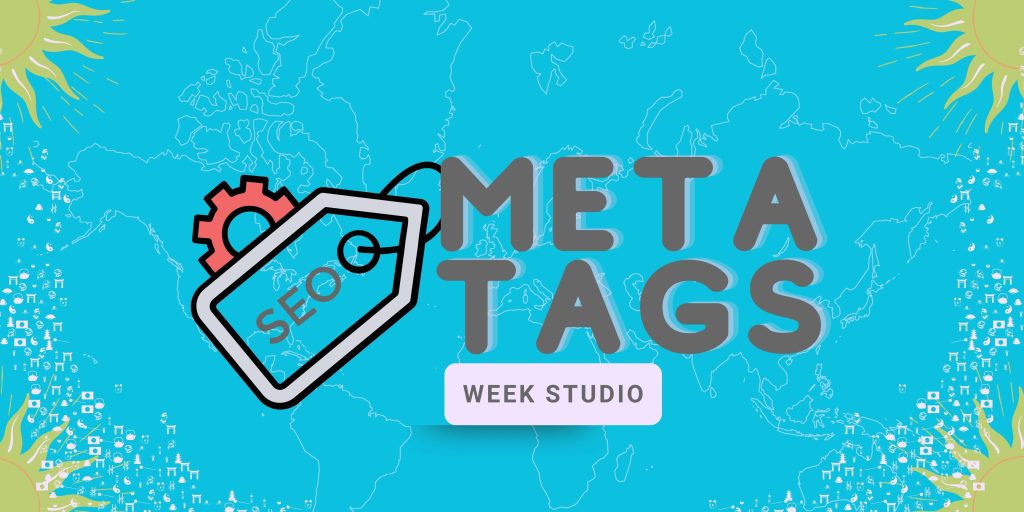In the intricate realm of digital marketing and search engine optimization (SEO), a term often whispered with reverence is “meta tags.” These snippets of HTML code might seem inconspicuous at first glance, but their impact on the visibility and ranking of your online content is nothing short of profound.
As we embark on this journey through the intricacies of meta tags, it’s essential to recognize their significance in the ever-evolving landscape of online visibility. Meta tags serve as silent guides, directing search engines on how to interpret and display your web pages. In this article, we’ll unravel the mystery surrounding meta tags, exploring their various types, understanding their SEO implications, and providing actionable insights to optimize them for maximum impact.
So, buckle up as we navigate the fascinating world of meta tags, where small lines of code wield substantial influence in determining the fate of your digital presence.
Meta Tags Overview

Before diving into the intricate details, let’s establish a foundational understanding of what meta tags are and why they matter in the grand scheme of online visibility.
Meta tags are snippets of HTML code embedded within the head section of a web page. They provide metadata—information about the page that isn’t visible on the actual content but is crucial for search engines and other applications. This metadata includes details like the page title, description, keywords, and more.
Types of Meta Tags
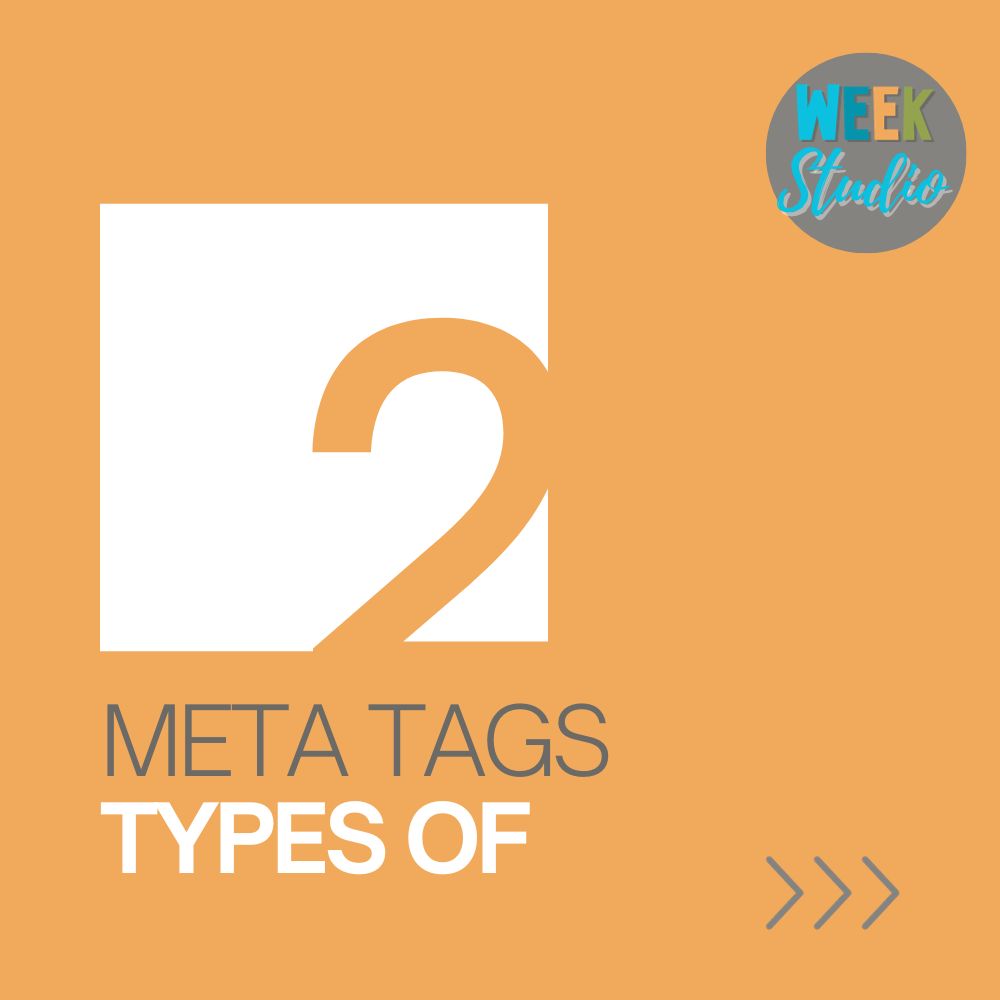
There isn’t a one-size-fits-all meta tag; rather, there are several types, each serving a specific purpose. Some of the key meta tags include:
- Meta Description Tag: Provides a concise summary of the page content.
- Meta Keywords Tag: Historically used for listing keywords, though its significance has diminished.
- Viewport Tag: Specifies how a webpage should be displayed on a mobile device.
- Robots Meta Tag: Directs search engine crawlers on how to index the page.
- Canonical Tag: Resolves duplicate content issues by specifying the preferred version of a page.
Understanding these different meta tags is fundamental to harnessing their power effectively.
Why Do Meta Tags Matter for SEO?
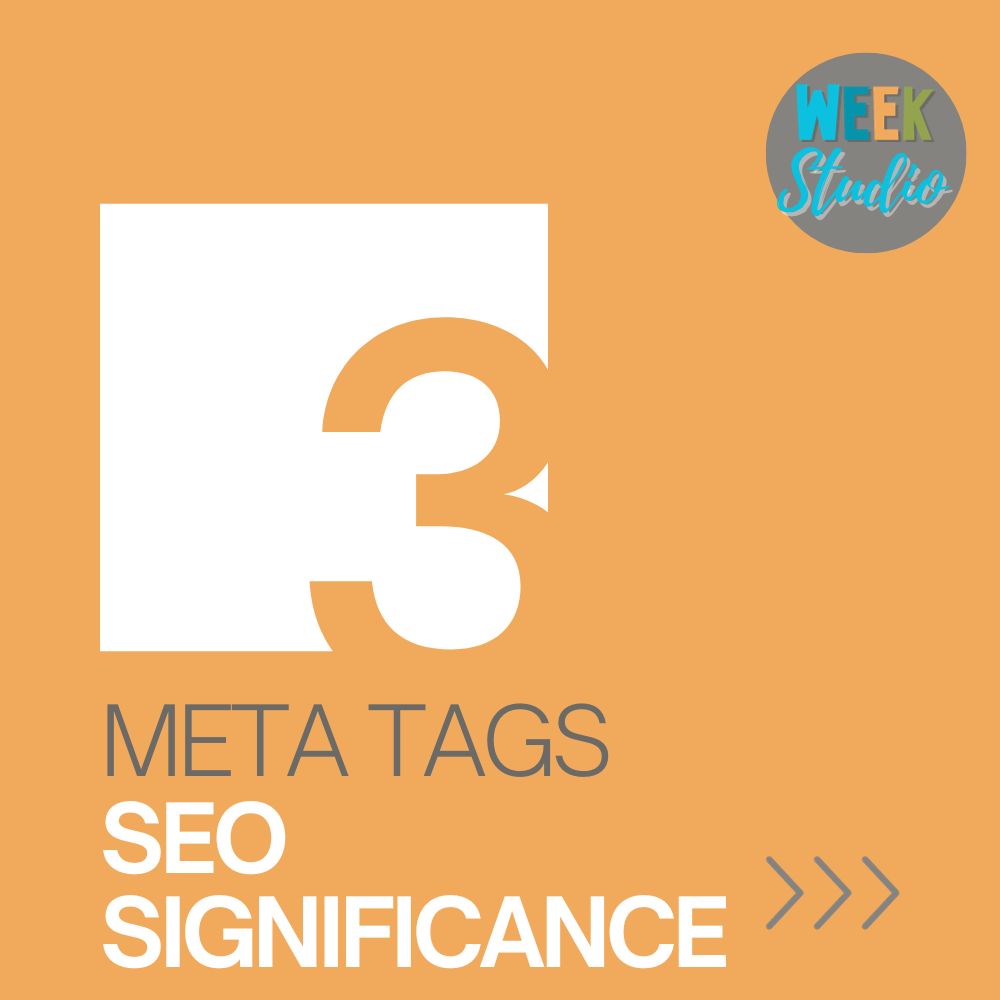
Meta tags serve as signposts for search engines, aiding them in understanding the context and relevance of your content. An effectively crafted meta tag can significantly impact your search engine rankings, influencing how your page appears in search results.
As we progress, we’ll delve deeper into the specific roles of different meta tags and how optimizing them can enhance your website’s visibility in the vast landscape of search engine results. So, stay tuned for insights that will empower you to harness the full potential of meta tags for SEO success.
SEO Significance
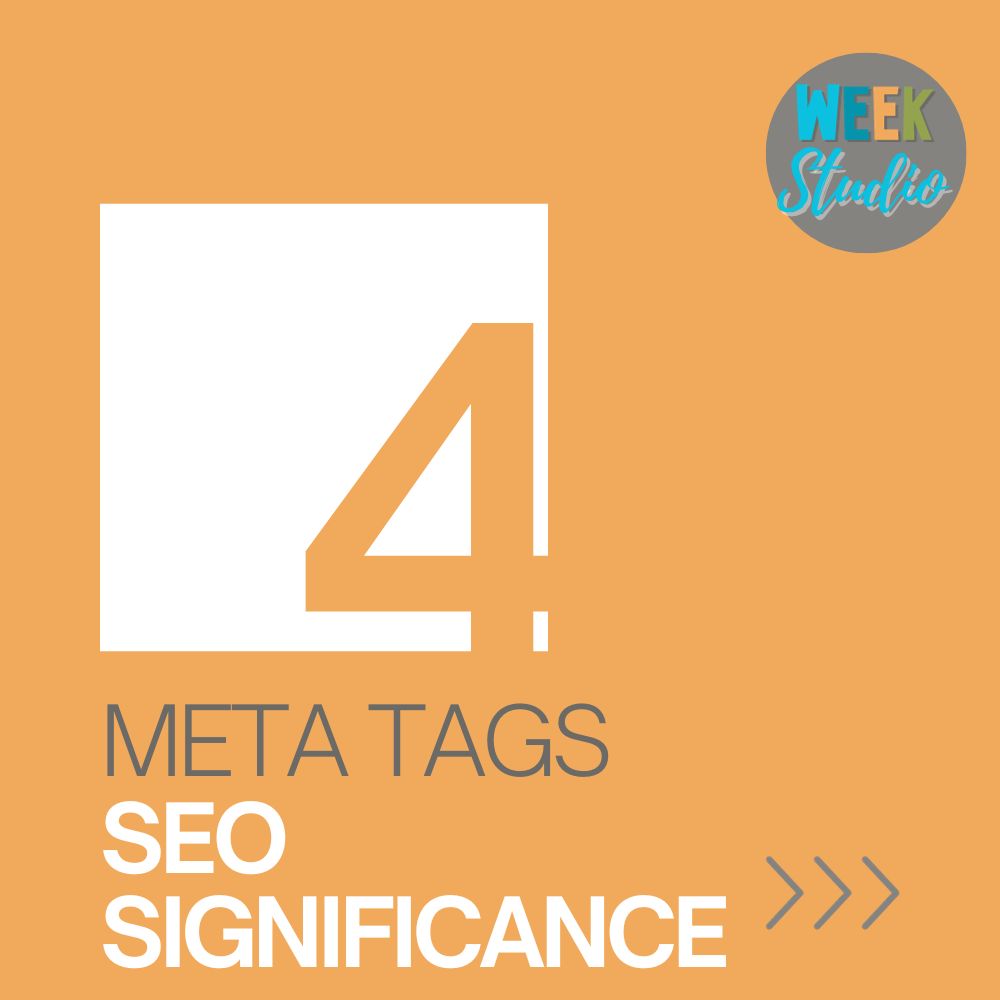
Now that we’ve laid the groundwork on what meta tags are, let’s explore their profound impact on Search Engine Optimization (SEO) and why they are considered the linchpin for online visibility.
Search engines are intricate algorithms designed to provide users with the most relevant and valuable content. Meta tags act as translators, helping search engines understand the content and context of a webpage. The information provided in meta tags, such as the title, description, and keywords, plays a pivotal role in determining where a page ranks in search results.
Crafting compelling meta tags isn’t just about appeasing search engines; it’s also about enticing users to click on your link. The title and meta description tags serve as the first interaction users have with your content in search results. A well-optimized and intriguing meta description can significantly improve click-through rates, driving more organic traffic to your site.
Meta Tags and Search Result Appearance
Ever wondered how some search results showcase additional information like star ratings, publication dates, or breadcrumbs? That’s the magic of structured meta data. By incorporating specific meta tags, you can enhance the appearance of your search results, making them more appealing and informative.
In the next sections, we’ll delve into the specifics of common meta tags, exploring how to optimize them effectively to boost your SEO efforts. Whether you’re a seasoned SEO practitioner or a novice navigating the digital landscape, understanding the significance of meta tags is crucial for achieving optimal visibility in search engine results. Stick around as we uncover the secrets to leveraging meta tags for SEO success.
Common Meta Tags
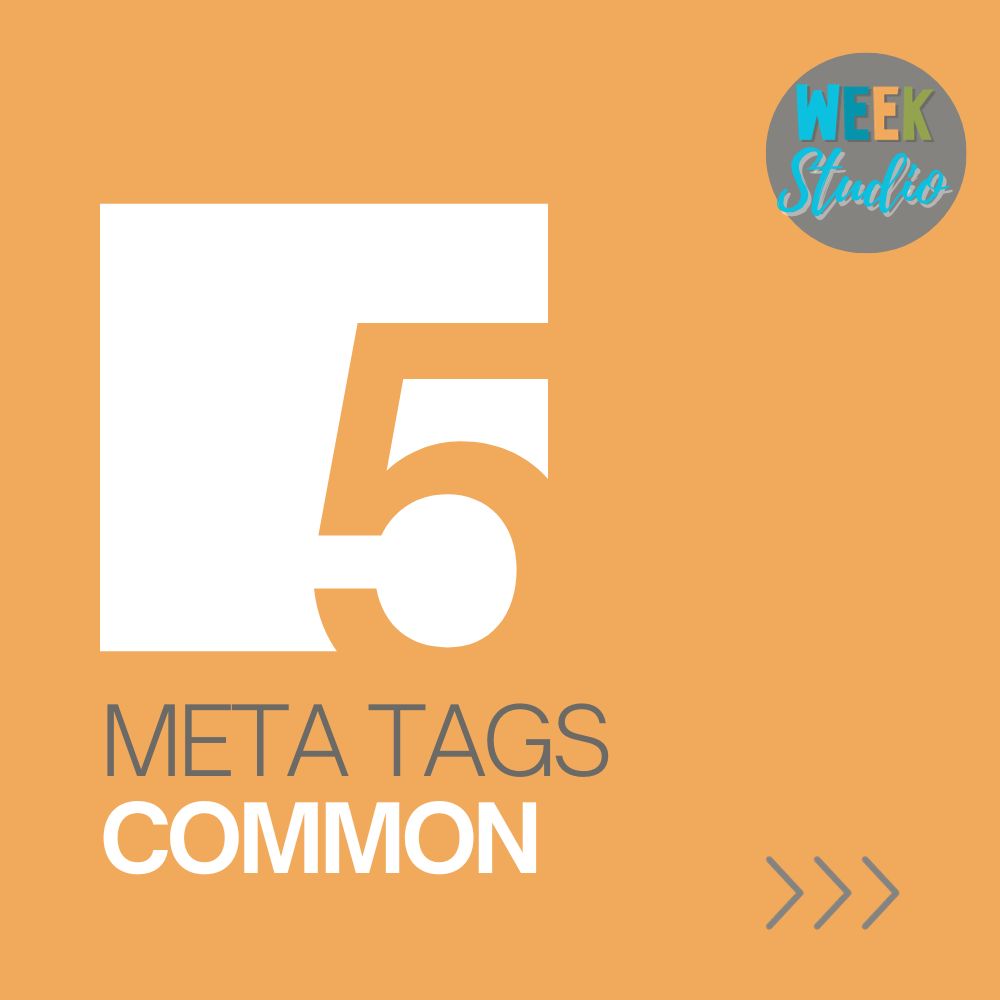
In the intricate world of meta tags, there are several key players that significantly influence how search engines perceive and present your web pages. Let’s delve into the common meta tags and unravel their roles in shaping the online visibility of your content.
The Title Tag stands as the headline of your web page. It’s the first thing users see in search results, and search engines give it considerable weight in determining the page’s relevance. Crafting a concise, engaging, and keyword-rich title tag is crucial for attracting clicks and conveying the essence of your content. The Meta Description Tag is your opportunity to provide a brief, compelling summary of your page’s content. Although not a direct ranking factor, a well-crafted meta description can significantly impact click-through rates, as it serves as the snippet users read before deciding to visit your site.
Best Practices
Now that we’ve familiarized ourselves with the common meta tags, let’s explore the best practices for optimizing them to boost your SEO efforts. Implementing these strategies can significantly enhance the visibility and click-through rates of your web pages.
Begin by conducting thorough keyword research to identify relevant terms and phrases for your content. Incorporate these keywords naturally into your title tags, ensuring they accurately reflect the content of the page. However, prioritize user experience and readability—avoid keyword stuffing.
Craft Compelling Meta Descriptions
The meta description tag is your opportunity to entice users to click on your link. Craft a concise and compelling description that not only includes relevant keywords but also communicates the value and uniqueness of your content. Aim to spark curiosity and provide a clear preview of what users can expect.
With the increasing prevalence of mobile browsing, optimizing the viewport tag is crucial. Ensure that your web pages are responsive and provide a seamless experience across various devices. Test how your pages appear on different screen sizes to guarantee a positive user experience.
Effectively use the robots meta tag to guide search engine crawlers. Specify whether certain pages should be indexed or not, and control the flow of link equity throughout your site. This tag is particularly useful when dealing with sections of your site you don’t want search engines to crawl.
Leverage Canonical Tags for Content Consolidation
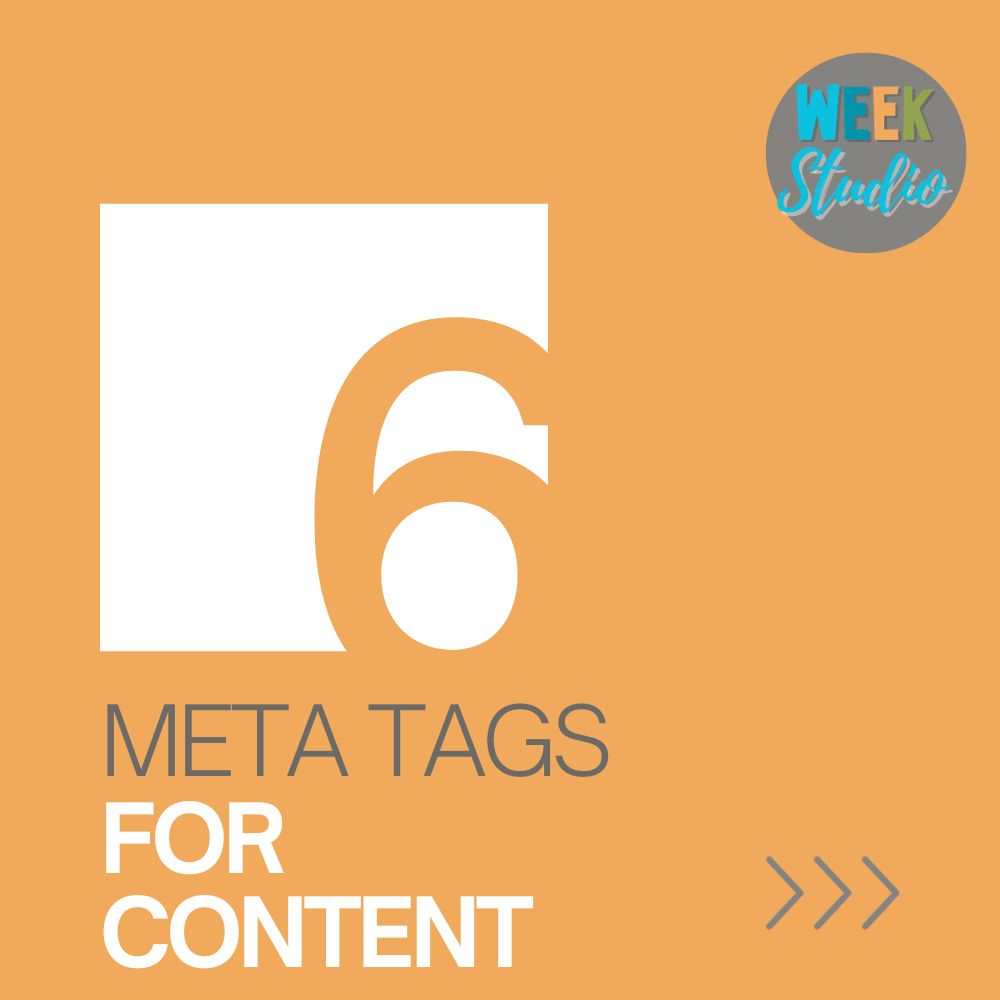
Utilize the canonical tag to address duplicate content issues. When multiple versions of a page exist, designate a canonical version to consolidate the SEO value. This helps search engines understand which version to prioritize, preventing potential ranking conflicts.
SEO is an ongoing process, and so is the optimization of meta tags. Regularly review and update your meta tags to align with changes in your content and evolving SEO strategies. Keep an eye on performance metrics and adjust your approach accordingly.
In the upcoming sections, we’ll explore real-life case studies to illustrate the impact of effective meta tag optimization. By implementing these best practices, you’ll be well on your way to maximizing the SEO potential of your web pages. Stay tuned for actionable insights and success stories that highlight the transformative power of well-optimized meta tags.
Meta Keywords Tag, while historically important, has lost its significance in recent SEO practices. Search engines now primarily rely on more sophisticated algorithms to determine the relevance of content, making the meta keywords tag obsolete in many cases. The Viewport Tag plays a crucial role in ensuring a positive user experience on mobile devices. It defines how a webpage should be displayed, considering factors like screen size and resolution. With the increasing prevalence of mobile browsing, optimizing this tag is essential for reaching a broader audience.
The Robots Meta Tag directs search engine crawlers on how to interact with your page. It can instruct them to index the content, follow links, or refrain from doing so. Proper utilization of this tag helps ensure that search engines interpret and categorize your content correctly. The Canonical Tag is a powerful tool for resolving duplicate content issues. It specifies the preferred version of a page when multiple versions with similar content exist. This helps in consolidating the SEO value of various versions into one, preventing dilution.
Understanding and optimizing these common meta tags are fundamental steps in enhancing your website’s visibility in search engine results. As we delve deeper into best practices, you’ll gain actionable insights on how to leverage these meta tags effectively for a robust SEO strategy.
Case Studies
Let’s dive into real-life examples that showcase the tangible impact of effective meta tag optimization. These case studies will provide insights into how businesses and websites have leveraged meta tags to improve their search engine visibility and overall online presence.
In a competitive e-commerce landscape, a major online retailer decided to revamp its title tags for product pages. By conducting in-depth keyword research and incorporating high-performing keywords into the title tags, they experienced a significant increase in click-through rates. The optimized title tags not only attracted more organic traffic but also improved the relevance of their pages in search results.
A popular blog platform experimented with crafting more engaging meta descriptions for its articles. By focusing on creating compelling and informative meta descriptions that encouraged users to click, they observed a notable boost in organic traffic. This simple yet effective strategy demonstrated the power of persuasive meta descriptions in driving user engagement.
A travel website recognized the importance of catering to mobile users and implemented a responsive design with an optimized viewport tag. This led to a considerable increase in mobile traffic and improved rankings in mobile search results. The enhanced user experience not only satisfied visitors but also aligned with search engine preferences for mobile-friendly content.
An informational website with a vast amount of content strategically used the robots meta tag to control indexation. By selectively allowing search engines to index certain pages while preventing others, they streamlined their site’s structure and improved the overall crawl efficiency. This approach resulted in better rankings for key pages.
Canonical Tags Resolving Content Duplication

A news website facing challenges with content duplication across various sections successfully implemented canonical tags. By specifying the preferred version of each page, they consolidated the SEO value and mitigated potential ranking conflicts. This proactive approach resulted in improved search engine rankings and a more coherent content hierarchy.
These case studies exemplify the transformative power of meta tag optimization when applied strategically. As we continue our exploration, we’ll uncover more insights and practical tips to help you implement these strategies effectively in your own digital endeavors. Stay tuned for a deeper understanding of how meta tags can shape the success of your online presence.
Meta Tags and Content
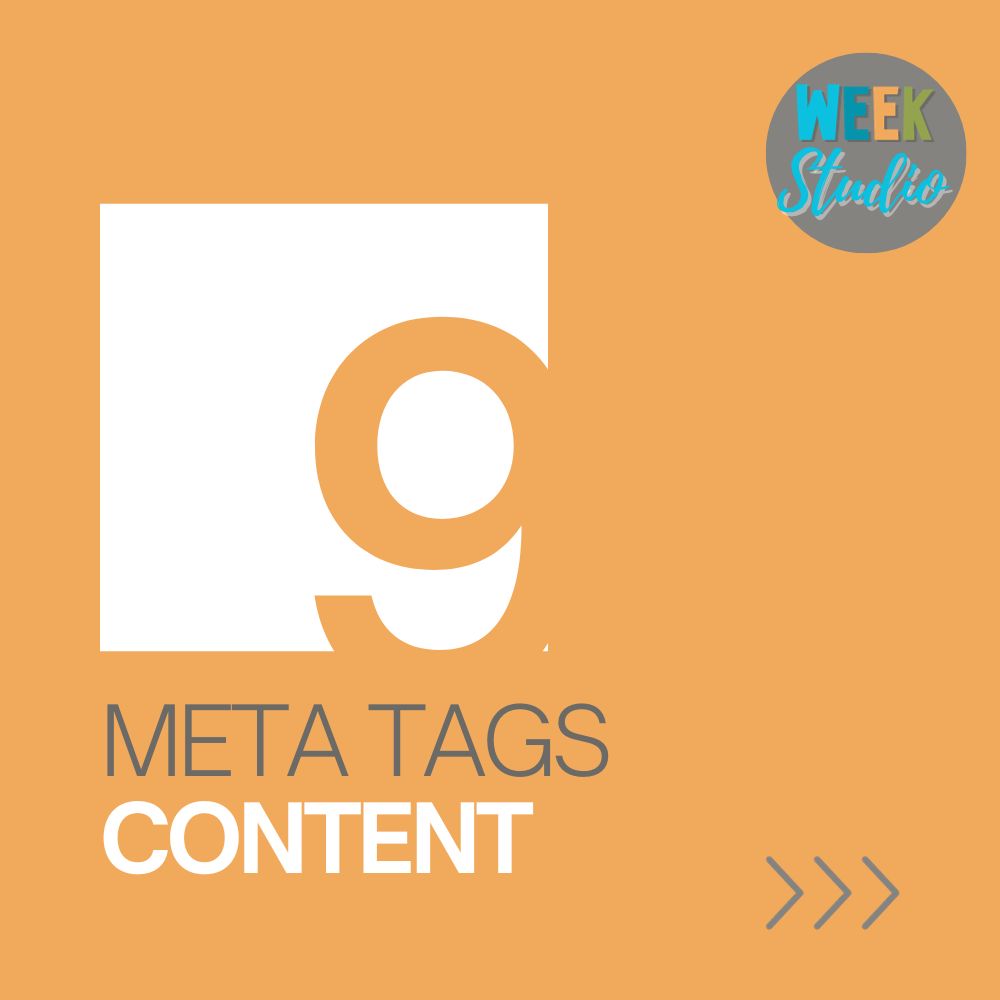
In this section, we’ll explore the symbiotic relationship between meta tags and content. While meta tags provide crucial information to search engines, the actual content on your page is what engages and satisfies your audience. Let’s delve into how these elements work together for enhanced online visibility.
One key aspect of effective meta tag optimization is aligning them with the themes and topics of your content. The title tag, in particular, should accurately represent the main idea of the page. This alignment not only helps search engines understand your content but also sets clear expectations for users, reducing bounce rates.
Maintaining consistency in keywords across meta tags and your content is vital. Search engines look for relevance and coherence between the terms used in meta tags and the actual content on the page. This consistency strengthens the overall SEO signal and improves the chances of ranking for targeted keywords.
While meta descriptions don’t directly influence rankings, they play a crucial role in enticing users to click. Craft meta descriptions that not only include relevant keywords but also provide a clear and enticing overview of the content. Think of it as a teaser that sparks curiosity and encourages users to explore further.
Search engines increasingly rely on user engagement metrics to assess the quality of a page. When users click on a search result and engage with the content—spending more time on the page, interacting with elements, or visiting multiple pages—it sends positive signals to search engines. Optimized meta tags that align with compelling content contribute to improved user engagement.
Fresh and Relevant Content Updates
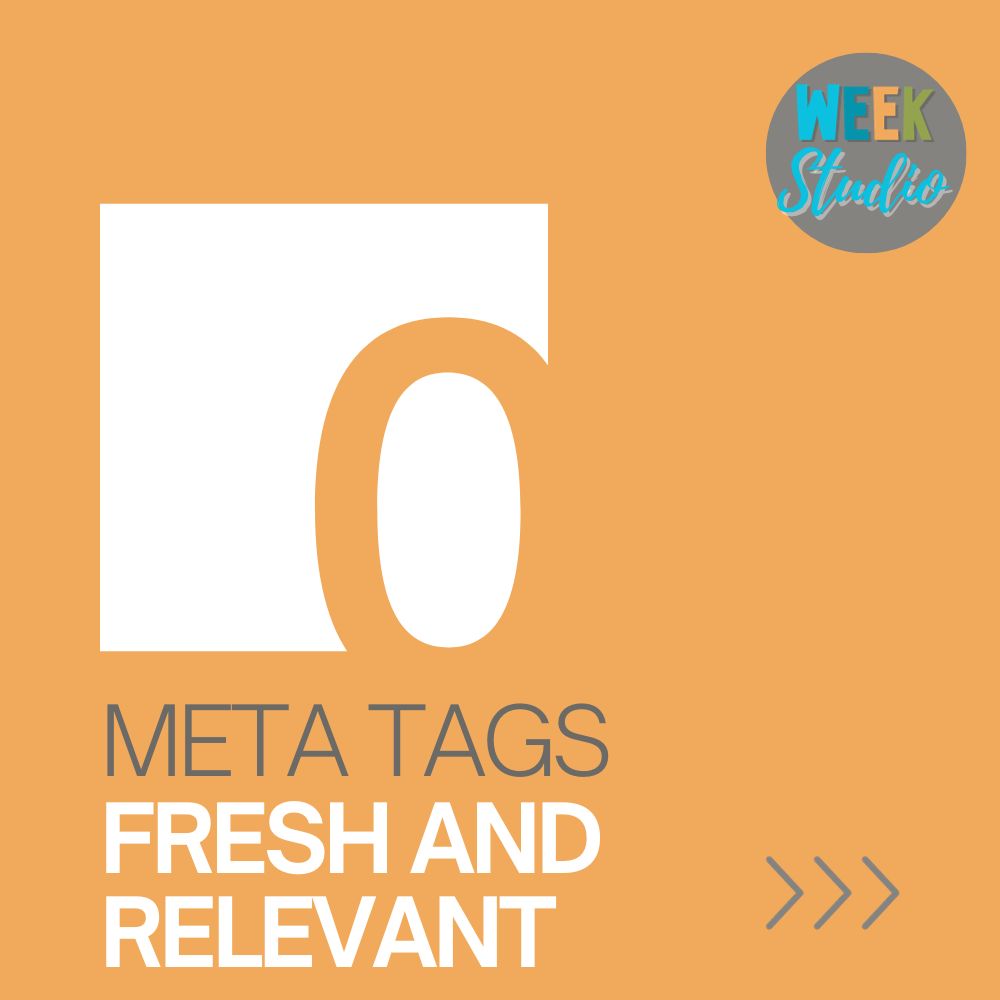
Regularly updating your content and aligning it with refreshed meta tags signals to search engines that your website is dynamic and valuable. This practice can positively impact rankings, especially for topics that require up-to-date information. Consider implementing a content update schedule to ensure your material remains relevant in the ever-changing digital landscape.
As we move forward, we’ll explore the evolving trends in meta tag optimization and how staying abreast of these changes can contribute to sustained SEO success. The interplay between meta tags and content is a dynamic aspect of digital marketing, and understanding how to balance and optimize both elements is key to a robust online presence. Stay tuned for insights that will empower you to navigate this dynamic landscape effectively.
Evolving Trends
In the fast-paced world of digital marketing, staying ahead of the curve is essential for sustained success. Let’s explore the evolving trends in meta tag optimization and how embracing these changes can give your SEO strategy a competitive edge.
Search engines are becoming increasingly sophisticated in understanding the context and semantics of content. Incorporating structured data through schema markup can provide search engines with additional information about your content. This, in turn, enhances the chances of your pages appearing in rich snippets, knowledge panels, and other specialized search results.
User experience is at the forefront of search engine algorithms. Beyond traditional SEO factors, search engines consider metrics like page load speed, mobile-friendliness, and overall user satisfaction. Optimizing meta tags for better user engagement, along with ensuring a seamless user experience, is crucial for staying in the good graces of search algorithms.
Voice Search Optimization
As the prevalence of voice-activated devices continues to rise, optimizing for voice search is gaining prominence. This trend requires a shift in keyword strategy and a focus on conversational language. Meta tags that align with how users naturally phrase voice queries can improve your chances of appearing in voice search results.
Visual search is another frontier that’s gaining traction. Search engines are evolving to understand and analyze images. Optimizing meta tags for images, such as alt text and image titles, becomes crucial in this context. Visual content, when appropriately tagged, can contribute to improved visibility in image search results.
Video content is increasingly becoming a staple in digital marketing. Optimizing meta tags for video content, including video titles, descriptions, and thumbnails, is essential. This not only enhances the discoverability of your videos on platforms like YouTube but also contributes to a more comprehensive online presence.
As we navigate these evolving trends, it’s clear that meta tag optimization is not a static practice. Adapting to the changing landscape and embracing new opportunities is integral to a resilient and effective SEO strategy. In the upcoming sections, we’ll explore tools and resources that can aid in analyzing and optimizing your meta tags to align with these emerging trends. Stay tuned for actionable insights that will keep your digital presence ahead of the curve.
Tools and Resources
In the ever-evolving world of SEO and meta tag optimization, having the right tools and resources at your disposal is essential. Let’s explore some handy tools that can assist you in analyzing and optimizing your meta tags for maximum impact.
Google Search Console is a powerhouse for understanding how your site performs in Google’s search results. It provides insights into keywords that drive traffic, click-through rates, and any potential issues with your meta tags. Regularly checking and analyzing your site in Google Search Console is a fundamental step in optimizing meta tags.
Yoast SEO Plugin
For websites built on platforms like WordPress, the Yoast SEO plugin is a valuable ally. It offers a user-friendly interface for optimizing meta tags, including title tags and meta descriptions. The plugin provides real-time feedback and suggestions, making it easier to ensure that your meta tags align with best practices.
SEMrush
SEMrush is an all-encompassing SEO tool that goes beyond meta tags. It provides insights into keyword rankings, competitor analysis, and backlink profiles. Utilize SEMrush to conduct comprehensive SEO audits, identify opportunities for improvement, and track the performance of your meta tag optimizations over time.
MozBar
MozBar is a browser extension that provides on-the-fly access to important SEO metrics. It overlays data on search engine results pages, helping you quickly assess the SEO strength of a page. Use MozBar to analyze the meta tags of your competitors, identify keyword opportunities, and gauge the overall SEO landscape for specific queries.
Google’s Structured Data Testing Tool
When implementing structured data and schema markup, Google’s Structured Data Testing Tool is indispensable. It allows you to test and validate your structured data, ensuring that search engines can correctly interpret the information you’re providing. Proper implementation of structured data can enhance your chances of appearing in rich snippets and other specialized search results.
As we navigate the tools and resources available for meta tag optimization, remember that the digital landscape is dynamic. Regularly utilizing these tools and staying informed about emerging technologies will empower you to adapt and refine your meta tag strategy effectively. In the subsequent sections, we’ll explore common mistakes to avoid in meta tag optimization and discuss the future prospects of meta tags in the ever-evolving field of SEO. Stay tuned for valuable insights that will enhance your digital marketing toolkit.
Mistakes to Avoid
While optimizing meta tags is crucial for SEO success, it’s equally important to be aware of common pitfalls that can negatively impact your efforts. Let’s explore some mistakes to avoid to ensure that your meta tag optimization strategy is on the right track.
One of the most common mistakes is excessive use of keywords, known as keyword stuffing. While it’s essential to incorporate relevant keywords, overloading your meta tags with them can lead to a poor user experience and may be penalized by search engines. Focus on natural, user-friendly language in your meta tags.
Each page on your website is unique, and so should be its meta tags. Using the same meta tags across multiple pages can confuse search engines and diminish the effectiveness of your optimization efforts. Craft unique and descriptive meta tags for each page to accurately represent its content.
Images and multimedia content play a significant role in modern web experiences. Neglecting to optimize meta tags for images, such as alt text and descriptions, can result in missed opportunities for visibility in image searches. Ensure that all elements of your content, including visuals, are appropriately tagged.
As mobile usage continues to rise, overlooking the optimization of meta tags for mobile devices can be detrimental. Ensure that your viewport tag is configured correctly to provide a seamless experience on smartphones and tablets. Ignoring mobile optimization can lead to a loss of potential visitors and hinder your search rankings.
Neglecting Regular Updates
SEO is an ongoing process, and so is meta tag optimization. Neglecting to update your meta tags regularly can lead to outdated information being displayed in search results. Stay proactive in reviewing and refreshing your meta tags to align with any changes in your content or SEO strategy.
By steering clear of these common mistakes, you’ll be better positioned to maximize the impact of your meta tag optimization efforts. In the following sections, we’ll explore the future prospects of meta tags in the ever-evolving landscape of SEO. Stay tuned for insights that will guide you in anticipating and adapting to emerging trends in meta tag optimization.
Future Prospects
As we look ahead into the future of SEO and digital marketing, the role of meta tags continues to evolve. Let’s explore the potential future prospects of meta tags and how they may shape the way we optimize for search engine visibility.
With search engines placing increasing emphasis on structured data, we can anticipate more advanced integration of structured data formats. This could include richer markup options for specific content types, enabling websites to provide even more context to search engines.
As technologies like artificial intelligence (AI) and natural language processing (NLP) become more sophisticated, we may see meta tags evolving to provide information in a format that’s easily digestible by these technologies. This could lead to more personalized and context-aware search results.
With the rising popularity of voice-activated devices and visual search capabilities, meta tags may adapt to cater specifically to these modes of interaction. Optimizing meta tags for voice-friendly and visually interpretable content could become a standard practice.
User experience signals are likely to remain a crucial factor in search engine algorithms. As search engines become more adept at measuring user satisfaction, optimizing meta tags for engagement and relevance will continue to be a focal point for SEO strategies.
Evolving Role in Local SEO
As local search becomes increasingly prominent, meta tags may play a more pronounced role in providing location-specific information. This could include optimizing meta tags to highlight business addresses, service areas, and other location-based details. Anticipating these future trends allows marketers and SEO practitioners to stay proactive in their approach to meta tag optimization. Embracing emerging technologies and adapting meta tag strategies to align with changing user behaviors will be key to maintaining a competitive edge in the dynamic landscape of digital marketing.
Conclusion
In the ever-evolving landscape of digital marketing, meta tags remain stalwart guides, directing search engines and users alike through the vast expanse of online content. As we conclude our exploration into the intricacies of meta tag optimization, let’s recap the essential insights we’ve uncovered.
Meta tags, comprising elements like the title tag, meta description, and others, play a pivotal role in determining how search engines interpret and present your content in search results. Crafting compelling and relevant meta tags is not only a best practice for SEO but also a means of engaging and enticing users to click on your links.
Throughout this journey, we’ve examined common meta tags, from the foundational title and meta description tags to specialized ones like viewport, robots, and canonical tags. Each serves a unique purpose, contributing to the overall SEO health of your web pages.
We’ve delved into best practices for optimizing meta tags, understanding the evolving trends in SEO, and exploring the symbiotic relationship between meta tags and content. From conducting keyword research to embracing emerging technologies like voice search and visual search, the strategies for meta tag optimization continue to evolve.
We’ve also discussed valuable tools and resources to aid in your optimization efforts, from Google Search Console for performance insights to plugins like Yoast SEO and comprehensive platforms like SEMrush for in-depth analysis.
However, optimization comes with its share of challenges, and we’ve highlighted common mistakes to avoid, such as keyword stuffing, neglecting mobile optimization, and duplicating meta tags across pages. By sidestepping these pitfalls, you ensure that your meta tag strategy remains effective and user-friendly.
Looking toward the future, we’ve explored potential prospects for meta tags, anticipating their integration with advanced technologies, enhanced structured data usage, and a continued emphasis on user experience signals.
In closing, meta tags are not merely lines of code; they are the ambassadors of your digital presence, conveying the essence of your content to both search engines and users. As the digital landscape continues to evolve, embracing these insights and staying agile in your approach to meta tag optimization will undoubtedly contribute to your success in the dynamic realm of SEO.
Frequently Asked Questions (FAQs)
- What is the purpose of meta tags in SEO?
- Meta tags provide metadata about a web page, guiding search engines on how to interpret and present content in search results. They play a crucial role in SEO by influencing rankings and impacting user click-through rates.
- Which are the most important meta tags for SEO?
- The title tag and meta description tag are particularly important for SEO. The title tag is a key ranking factor, and the meta description tag influences user engagement by providing a concise summary of the page.
- How often should I update my meta tags?
- Regularly updating meta tags is advisable, especially when there are changes to your content or SEO strategy. Keeping meta tags aligned with the current state of your web pages ensures accurate representation in search results.
- Are meta tags still relevant for SEO in 2023?
- Yes, meta tags remain relevant for SEO in 2023. While search engine algorithms continue to evolve, meta tags provide valuable information that aids in understanding and ranking web pages.
- How can I optimize meta tags for voice search?
- To optimize meta tags for voice search, focus on using natural, conversational language in your content and meta tags. Anticipate how users may phrase voice queries and incorporate those phrases into your optimization strategy.
As you embark on your journey in the ever-dynamic field of digital marketing, may your meta tags be crafted with precision, and your SEO endeavors be met with success. Happy optimizing!
